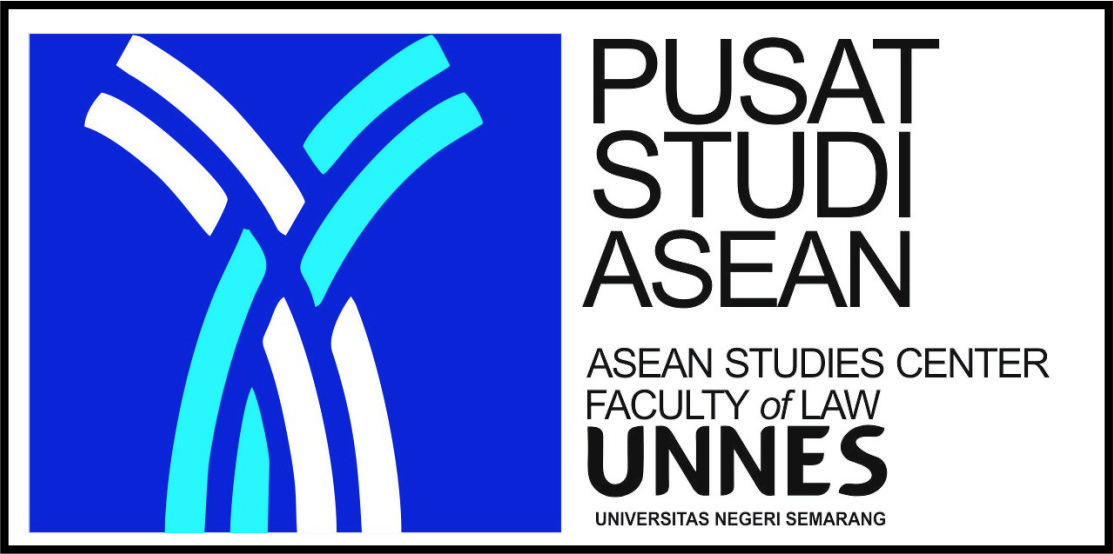Unleashing Justice’s Future: The Dawn of Neuro-Cognitive Risk Assessments (NCRA) in Transforming Rehabilitation
Abstract
Neuro-Cognitive Risk Assessments (NCRA) represent a groundbreaking innovation in the criminal justice system, concentrating on evaluating cognitive and decision-making factors to assess inmate recidivism risk. Introduced initially in Houston, Texas, in 2017, NCRA have shown substantial efficacy, evidenced by a 2020 study reporting an Area Under the Curve (AUC) value of 0.70, signifying a significant advancement in recidivism prediction. This research employs normative legal methods, utilizing a conceptual, comparative, and forward-looking approach, characterized as descriptive-prescriptive with data analyzed through content analysis. Key advantages of NCRA include their emphasis on cognitive factors and their capability to operate independently via digital platforms, reducing bias and enhancing objectivity. The global adoption of NCRA, including in countries like Canada, the Netherlands, and Australia, underscores its recognition as a promising tool in criminal justice practices. However, ethical considerations and responsible usage are paramount, ensuring the protection of individual rights and involving diverse stakeholders. The integration of NCRA into rehabilitation programs and public policies presents opportunities to enhance efforts against recidivism. By identifying individual needs more accurately and improving predictions of rehabilitation success, NCRA can motivate inmate engagement in rehabilitation initiatives. Moreover, NCRA support the development of effective crime prevention policies, contributing to broader societal well-being. In conclusion, NCRA represent a transformative approach in criminal justice, leveraging cognitive assessments to refine recidivism risk evaluations and enhance rehabilitation outcomes. Ethical deployment and collaborative engagement are critical to maximizing NCRA's potential in promoting justice and reducing reoffending globally.
Keywords
Full Text:
PDFReferences
Akhmad, Akhmad, Zico Junius Fernando, and Papontee Teeraphan. “Unmasking Illicit Enrichment: A Comparative Analysis of Wealth Acquisition Under Indonesian, Thailand and Islamic Law.” Journal of Indonesian Legal Studies 8, no. 2 (2023): 899–934.
Asscher, Jessica J, Maja Deković, Peter H van der Laan, Pier J M Prins, and Sander van Arum. “Implementing Randomized Experiments in Criminal Justice Settings: An Evaluation of Multi-Systemic Therapy in the Netherlands.” Journal of Experimental Criminology 3, no. 2 (2007): 113–29.
Baraza, Samson. “Criminal Justice Should Focus More on Rehabilitation than Punishment.” SSRN Electronic Journal, November 2020, 1–7.
Ben-Haim, Moshe Shay, Paul Williams, Zachary Howard, Yaniv Mama, Ami Eidels, and Daniel Algom. “The Emotional Stroop Task: Assessing Cognitive Performance under Exposure to Emotional Content.” Journal of Visualized Experiments : JoVE 2016, no. 112 (June 2016): 1–10.
“Center for Science & Law,” n.d.
Chandler, Chelsea, Peter W Foltz, Alex S Cohen, Terje B Holmlund, Jian Cheng, Jared C Bernstein, Elizabeth P Rosenfeld, and Brita Elvevåg. “Machine Learning for Ambulatory Applications of Neuropsychological Testing.” Intelligence-Based Medicine 1–2 (2020): 1–11.
Dean, Geoff. Neurocognitive Risk Assessment for the Early Detection of Violent Extremists. Springer, 2014.
Divisi HUMAS POLRI. “BNPT: 116 Eks Napiter Kembali Jadi Residivis Terorisme.” humas.polri.go.id, 2023.
Fernando, Zico Junius, Kiki Kristanto, Ariesta Wibisono Anditya, Sawitri Yuli Hartati, and Agri Baskara. “Robot Lawyer in Indonesian Criminal Justice System: Problems and Challenges for Future Law Enforcement.” Lex Scientia Law Review 7, no. 2 (November 2023): 1–24.
Geest, C.C.C. van, and H.J. Engelbregt. “The Use of the Eriksen Flanker Task as Training Instrument for Cognitive Control in Inhibition Disorder.” Applied Neuroscience And Mental Health 2, no. 1 (December 2022): 2–7.
Glenn, Andrea L., and Adrian Raine. “Neurocriminology: Implications for the Punishment, Prediction and Prevention of Criminal Behaviour.” Nature Reviews Neuroscience 2013 15:1 15, no. 1 (December 2013): 54–63.
Golomb, Beatrice A., Myrna Cortez-Perez, Beth A. Jaworski, Sarnoff Mednick, and Joel Dimsdale. “Point Subtraction Aggression Paradigm: Validity of a Brief Schedule of Use.” Violence and Victims 22, no. 1 (February 2007): 95–103.
Haarsma, Gabe, Sasha Davenport, Devonte C. White, Pablo A. Ormachea, Erin Sheena, and David M. Eagleman. “Assessing Risk Among Correctional Community Probation Populations: Predicting Reoffense With Mobile Neurocognitive Assessment Software.” Frontiers in Psychology 10, no. January (2020): 1–13.
Kumparan.com kumparanNEWS. “Dirjen PAS: Selama 2019, Residivis Narkoba Dekati Angka 9 Ribu Orang.” Kumparan.com, 2019.
Lejuez, C. W., Will M. Aklin, Michael J. Zvolensky, and Christina M. Pedulla. “Evaluation of the Balloon Analogue Risk Task (BART) as a Predictor of Adolescent Real-World Risk-Taking Behaviours.” Journal of Adolescence 26, no. 4 (August 2003): 475–79.
Levack, William M M. “Ethics in Goal Planning for Rehabilitation: A Utilitarian Perspective.” Clinical Rehabilitation 23, no. 4 (2009): 345–51.
Pettanase, Ismail. “Pembinaan Narapidana Dalam Sistem Pemasyarakatan.” Solusi 17, no. 1 (January 2019): 57–63.
Ross, Erin H, and Peter N S Hoaken. “Correctional Remediation Meets Neuropsychological Rehabilitation: How Brain Injury and Schizophrenia Research Can Improve Offender Programming.” Criminal Justice and Behavior 37, no. 6 (April 2010): 656–77.
Sánchez-Kuhn, Ana, José Juan León, Karinna Gôngora, Cristian Pérez-Fernández, Fernando Sánchez-Santed, Margarita Moreno, and Pilar Flores. “Go/No-Go Task Performance Predicts Differences in Compulsivity but Not in Impulsivity Personality Traits.” Psychiatry Research 257 (2017): 270–75.
Schulenberg, Stefan E, and Barbara A Yutrzenka. “Ethical Issues in the Use of Computerized Assessment.” Computers in Human Behavior 20, no. 4 (2004): 477–90.
Setyawan, Arif Budi. “IPAC: Ada 94 Residivis Kasus Terorisme Sejak 2002 Hingga Mei 2020 - Dare to Share.” Ruangobrol.id, 2020.
Shirtcliff, Elizabeth A., Michael J. Vitacco, Alexander R. Graf, Andrew J. Gostisha, Jenna L. Merz, and Carolyn Zahn-Waxler. “Neurobiology of Empathy and Callousness: Implications for the Development of Antisocial Behavior.” Behavioral Sciences & the Law 27, no. 2 (March 2009): 137–71.
Zico Junius Fernando et al. “Preventing Bribery in the Private Sector Through Legal Reform Based on Pancasila.” Cogent Social Sciences 8, no. 1 (2022): 1–14.
Refbacks
- There are currently no refbacks.











